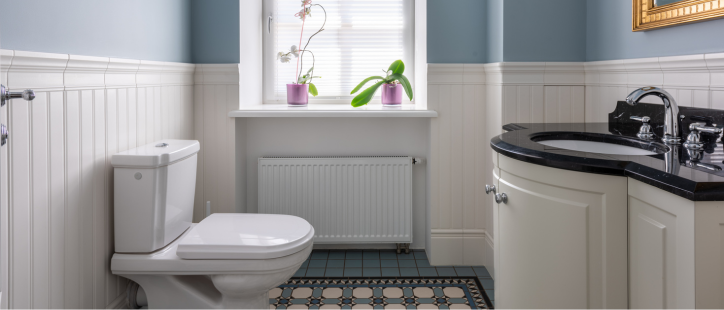Water pressure regulators, also known as pressure-reducing valves (PRVs), are essential components of your plumbing system that help control and maintain the water pressure in your home. They play a crucial role in preventing high water pressure, which can lead to various plumbing issues, including burst pipes, leaks, and appliance damage. Like any mechanical device, water pressure regulators have a finite lifespan. In this blog post, we’ll explore how long a water pressure regulator typically lasts, factors that can affect its lifespan, signs of failure, and tips for maintenance and replacement.
Typical Lifespan
The lifespan of a water pressure regulator can vary depending on several factors, including the quality of the regulator, the water quality in your area, and how well it’s maintained. On average, a well-maintained one can last anywhere from 15 to 20 years. However, some regulators may fail sooner, while others can continue functioning for several decades.
Factors Affecting the Lifespan
- Quality of the Regulator: The quality of the pressure regulator itself is a significant factor in its lifespan. High-quality regulators made from durable materials tend to last longer than cheaper, lower-quality alternatives.
- Water Quality: The quality of the water in your area can impact the longevity of your pressure regulator. Water with high levels of sediment, minerals, or contaminants may cause more wear and tear on the regulator, potentially reducing its lifespan.
- Maintenance: Regular maintenance can extend the life of your pressure regulator. Lubricating moving parts, checking for leaks, and making adjustments as needed can help keep the regulator in good working condition.
- Pressure Fluctuations: Frequent and extreme pressure fluctuations in your water supply can put additional stress on the regulator, potentially shortening its lifespan.
- Installation: Proper installation by a qualified plumber is essential. Incorrect installation can lead to premature wear and tear and may result in the need for early replacement.
Signs of Failure
As a water pressure regulator nears the end of its lifespan, it may exhibit signs of wear and begin to malfunction. Some common signs of a failing pressure regulator include:
- Inconsistent Water Pressure: If you notice fluctuations in water pressure throughout your home, it may be a sign that the regulator is no longer effectively controlling the pressure.
- Increased Water Bills: A malfunctioning regulator can lead to higher water bills due to excessive water usage caused by elevated pressure.
- Loud Noises: Unusual noises, such as banging or humming sounds in your pipes, can indicate pressure irregularities associated with a failing regulator.
- Leaks: Leaking around the regulator or visible water leaks in your plumbing system can be a sign of regulator failure.
- High or Low Pressure: Extremely high or low water pressure can indicate a regulator that is no longer functioning correctly.
- Reduced Lifespan of Appliances: If your appliances, such as washing machines and water heaters, are failing prematurely, it could be due to inconsistent water pressure caused by a failing regulator.
Maintainence and Replacment
To extend the life of your water pressure regulator and ensure it continues to function correctly, consider these maintenance tips:
- Regular Inspections: Periodically inspect the regulator for signs of leaks, corrosion, or visible damage.
- Lubrication: If your regulator has lubrication points, follow the manufacturer’s recommendations for lubricating moving parts to reduce friction and wear.
- Pressure Testing: Occasionally test the water pressure in your home to ensure it falls within the desired range. If you notice significant fluctuations, it may be time to replace the regulator.
- Professional Inspection: Schedule periodic professional inspections of your plumbing system to include a thorough check.
When it becomes clear that your water pressure regulator is failing or has reached the end of its lifespan, it’s important to replace it promptly to prevent potential damage to your plumbing system and appliances. Here are some steps to follow when replacing your water pressure regulator:
- Turn Off the Water: Shut off the main water supply to your home before beginning the replacement process.
- Release Pressure: Open a few faucets in your home to release any remaining water pressure in the plumbing system.
- Remove the Old Regulator: Carefully disconnect the old pressure regulator from the plumbing system. Be sure to follow the manufacturer’s instructions and use the appropriate tools.
- Install the New Regulator: Install the new regulator in the same location and orientation as the old one. Ensure that it is securely fastened and properly aligned.
- Adjust Pressure: Adjust the new regulator to the desired water pressure setting, which is typically between 40 and 60 psi (pounds per square inch).
- Test for Leaks: Turn the water supply back on and check for any leaks around the regulator. If you notice any leaks, address them immediately.
- Monitor Performance: Keep an eye on your plumbing system’s performance after installing the new regulator to ensure that water pressure is consistent and within the desired range.
In conclusion, the lifespan of a water pressure regulator can vary, but with proper maintenance and care, it can last anywhere from 15 to 20 years. Regular inspections, lubrication, and monitoring for signs of failure are essential to maximize the lifespan of your regulator. When it’s time for replacement, be sure to choose a high-quality regulator and follow proper installation procedures to ensure your plumbing system continues to function smoothly. If you suspect issues with yours, it’s advisable to consult a licensed plumber for a professional assessment and, if necessary, replacement.



